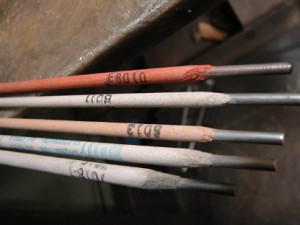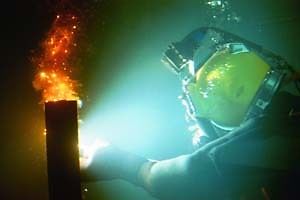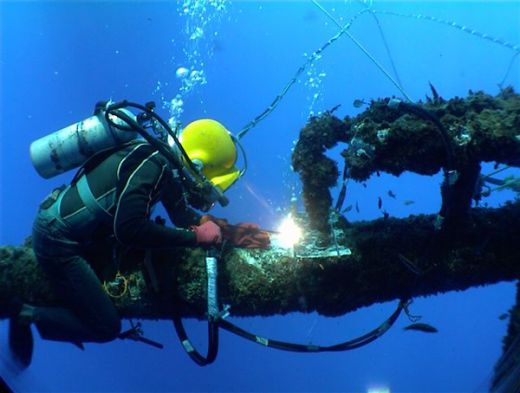Shock Prevention

One of the most prevalent risks that you should be aware of is electric shock. Water poses little resistance to electricity, and if left ungrounded an electric current will flow freely through water. All welder-divers face risk of electric shock, especially during wet welding since their entire atmosphere is composed of water. Welder divers that work in “splash zones” (areas intermittently covered by water) face even more risk given the exact position they must hold while they work, water waves can throw them off balance and cause variables that loosen the grounding cable. Three independent actions occur simultaneously to shock diver-welders such as parts of their operating equipment experiences electrical failure, ground fault interrupter fails or the welder diver goes between path of fault and earth ground. Most preparation for underwater welder projects happen above the surface, not below. Proper equipment inspections are crucial to reducing risk of shock. Direct current, not alternating current, should be used to power welding equipment.
Explosive Potential

Underwater welding produces gases (oxygen and hydrogen) that have explosive potential if combined in high levels. During wet welding, welder-divers may hear a small popping sound caused from hydrogen and oxygen bubbles traveling upward and collecting. This sound should serve as a warning to stop welding immediately to locate the area where gas is collecting. Good safety measures for preventing explosions are to look for any parts of your work area that could trap gases to the surface. Weld from the highest to lowest point if possible. Electrodes that exceed 10,000 degrees Fahrenheit in a gaseous environment may explode if a spark occurs. Thick material: Work from the outside around circumference, pull electrode away every few seconds to make brush action. You may want to allow water to enter the weld to keep temperature down, though this reduces the quality.If working on or above river beds, remember that mud can already have explosive methane gas trapped within it. Especially riverbeds with cows nearby.
Fight the Cold
In addition to decompression sickness, all divers expose themselves to various risks underwater. Although not as high profile in nature, all divers should prepare themselves for these risks. Drowning is always going to be a risk, especially since you may be under water, checking your equipment before diving such as your mask, tanks, hoses, and other piece of equipment should ensure that you have no malfunction. The deeper you go, the colder it gets. In addition to highly insulated scuba equipment, welder-divers should check for any small tears in their dry suit and gloves. If water penetrates your skin, your body temperature will quickly drop in a cold environment. In certain cases, saturation divers will use helium in their environment to reduce chances of decompression sickness. Because of helium’s thermal properties, divers must constantly monitor their temperature after absorbing large amounts of helium into their bloodstream.
Underwater welding is a risky job, it pays well, and is definitely something to brag about. The experience that this field of work grants you will last you a lifetime, but what good is the experience if you wont make it far enough to gain any with such a limited knowledge on safety? This article is written to give others a general idea of what to expect in this field of work, and for the veteran diver welders this serves as kind of a refresher. For some, this job is too risky, for others it poses the perfect challenge.



Great post. I’ve always wondered how welding can take place underwater. We had to have some work done to shore up a metal dock and I couldn’t figure out how they keep from getting shocked, so thanks for talking about the safety procedures. It’s certainly something to brag about, like you said.